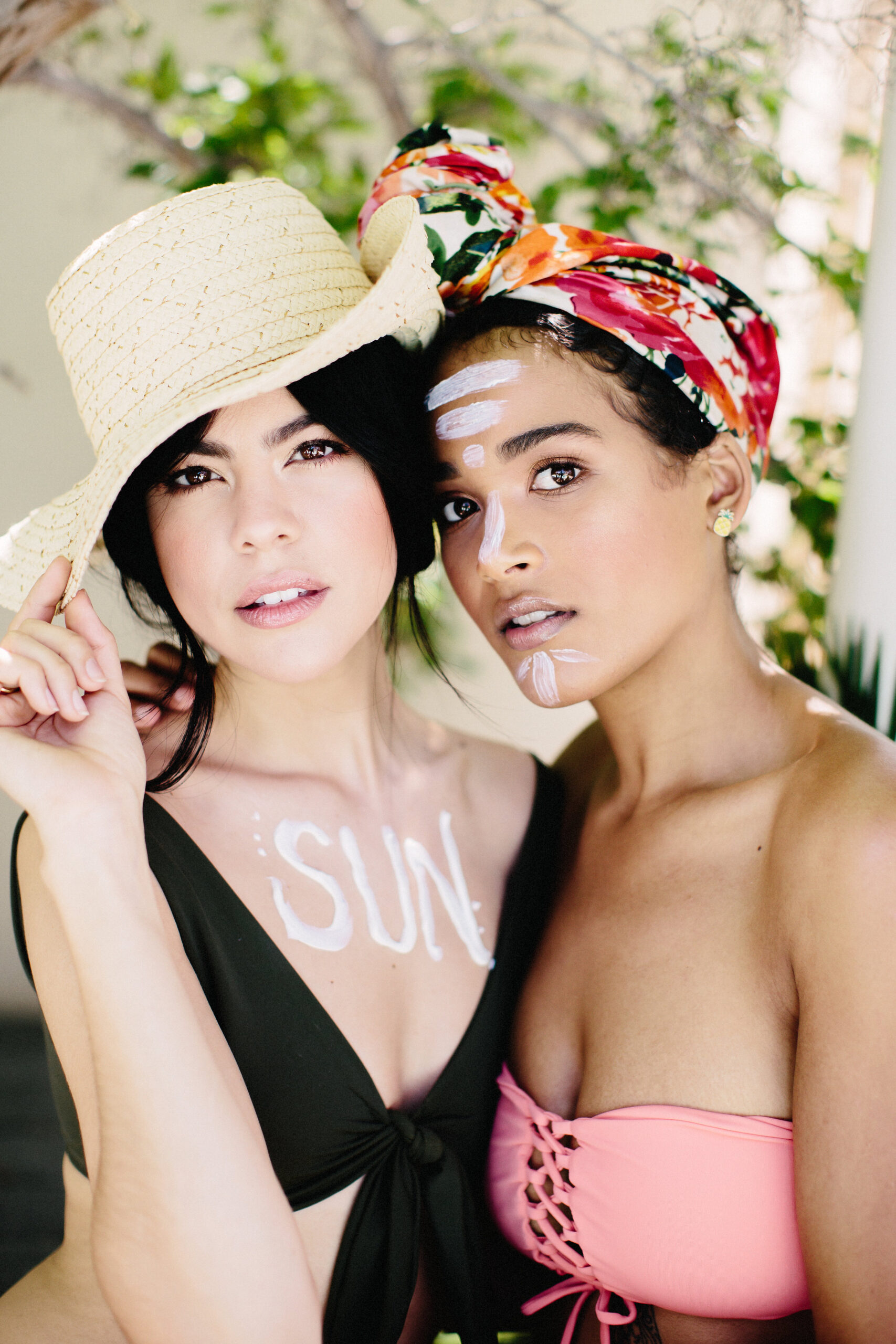May is Skin Cancer Awareness Month. According to the Skin Cancer Foundation, over 5 million cases of skin cancer are diagnosed each year. Skin Cancer is preventable, so it is important to raise awareness about the dangers of unprotected sun exposure. Here are the most common sun care myths, that could be putting you at an elevated risk for developing skin cancer.
Myth 1: Getting a “base tan” will prevent sunburn
This myth is a common excuse many of my clients will use to lay in a tanning bed or lay out in the sun for long periods of time. However, let me be very clear here, and start by telling you, that there is no such thing as a “base tan.” A tan is damage to your skin. When your skin is exposed to the harmful UV rays of the sun, it increases pigment to protect itself and prevent further damage. Relying on a “base tan” alone, to prevent sunburn, is the equivalent of wearing a sunscreen with an SPF of 3 or 4.
The best way to prevent getting a sunburn, is to apply a generous amount of sunscreen to your face and body, every two hours. You can also limit your sun exposure by staying indoors during peak times of the day.
Myth 2: I rarely burn so I don’t need sunscreen
Sun damage goes beyond getting a sunburn. In fact, most of the damage caused by UV rays, cannot be seen on the surface of the skin.
Photoaging is premature aging of the skin caused by UVA rays. These type of UV rays are longer in length and therefore penetrate deep into the dermis, where they wreak havoc by breaking down collagen and elastin. The more time you spend in the sun, the harder it becomes for your skin to rebuild healthy collagen. When your skin is depleted of collagen, wrinkles will begin to set in and the texture of your skin will become rough and leathery. This look is not cute, and makes you look older than you really are.
This makes sunscreen the true miracle cream in ageless skin care.
Myth 3: Tanning beds are safer than tanning in the sun
This could not be further from the truth. It is hard to believe that even with all of the data and continuous education we have on this topic, many people are still choosing to use tanning beds.
The American Academy of Dermatology says “Just one indoor tanning session can increase the risk of developing skin cancer (melanoma by 20%, squamous cell carcinoma by 67%, and basal cell carcinoma by 29%).”
Whether you tan in an indoor bed or out in the sun, the fact of the matter is, the tan is not permanent and will fade over time so why put your health at risk? There are safer ways to achieve a sun-kissed glow, including getting a professional spray tan or using an at home bronzing lotion, both of which can be done all year long.
Myth 4: Skin Cancer is Only Found On The Skin
While skin cancer develops primarily on areas of sun exposed skin on the face and body, it can also form on less common areas that rarely see the sun, including fingernails and toenails, scalp, palms of hand, and soles of feet. It is important to visit your dermatologist for a yearly skin cancer screeing and be sure to mention any unusual skin lesions or discolrations. When in doubt, get it checked out!
Myth 5: I’m Not Oustide Much So I’m Not At Risk
Dermatologist have found that even brief sun exposure throughout the year can cause signigicant changes in the skin, even more so for people with fair skin. In fact fair skin women experiencing one to five severe sunburns between the ages of 15 to 20 can can have a substantially increased risk for skin cancer by about 80%.
Myth 6: People of Color Can’t Get Skin Cancer
It’s true that people of color have a much lower risk of developing skin cancer but this does not make them completely immune. Anyone with a darker skin complexion should still take the same percautions including limiting sun exposure and applying broad spectrum SPF protection. Most cases of skin cancer in people of color are detected in more dangerous advanced stages.
For more expert skin care and wellness tips, check out the blog. Also, be sure to follow Beauty & Twine on Instagram and join the Facebook page.
Content found on beautytwinespa.com, including: text, images, audio, or other formats were created for informational purposes only. The Content is not intended to be a substitute for professional medical advice, diagnosis, or treatment. Always seek the advice of your physician or other qualified health provider with any questions you may have regarding a medical condition. Never disregard professional medical advice or delay in seeking it because of something you have read on this blog.
San Antonio certified esthetician Beauty & Twine uses an age-positive, holistic approach to skincare for women and men looking for long-term solutions that empower them to embrace their natural beauty and reignite confidence in their skin.
